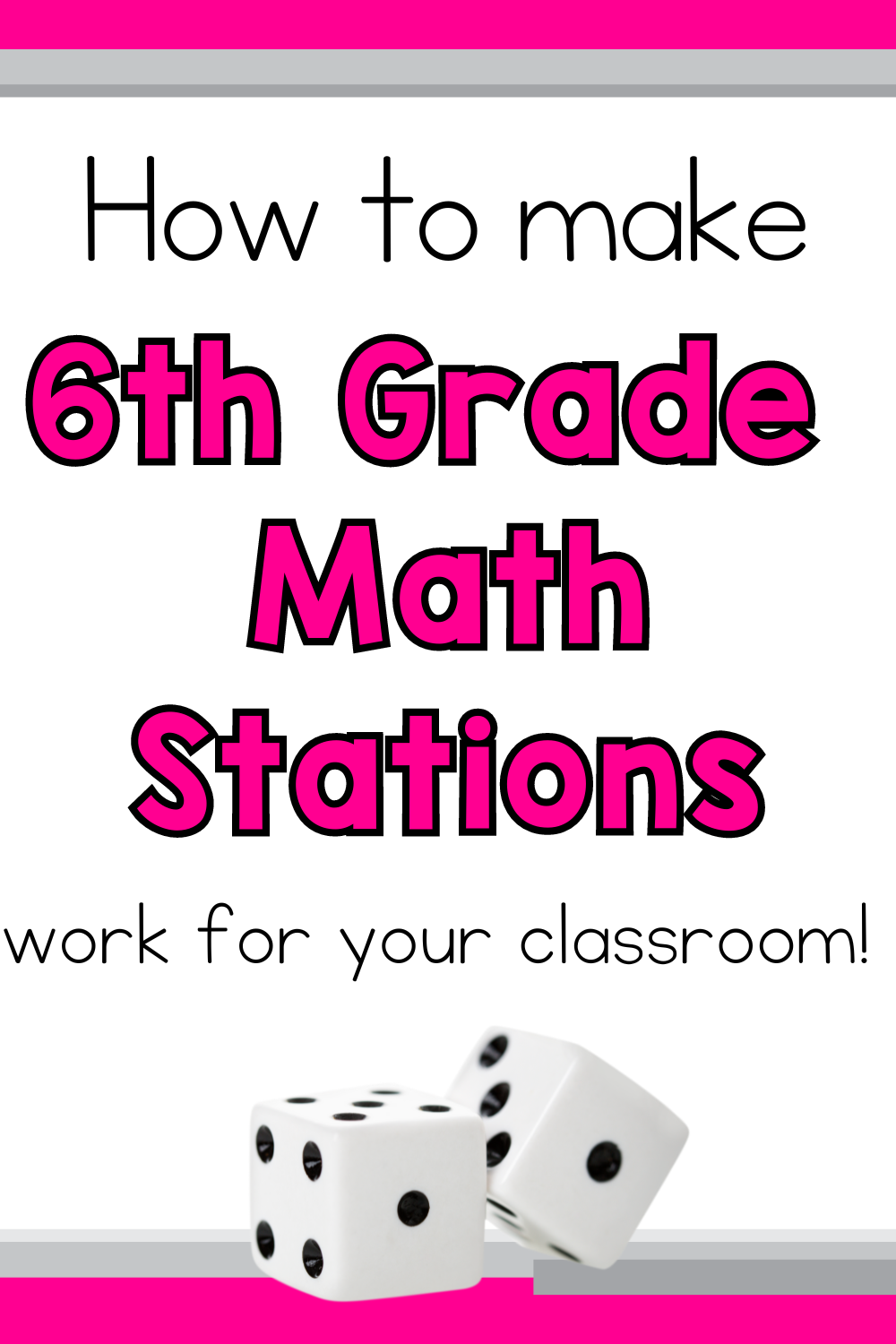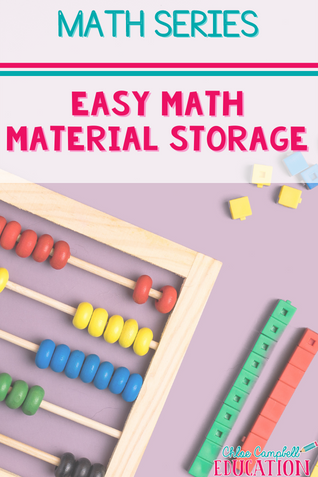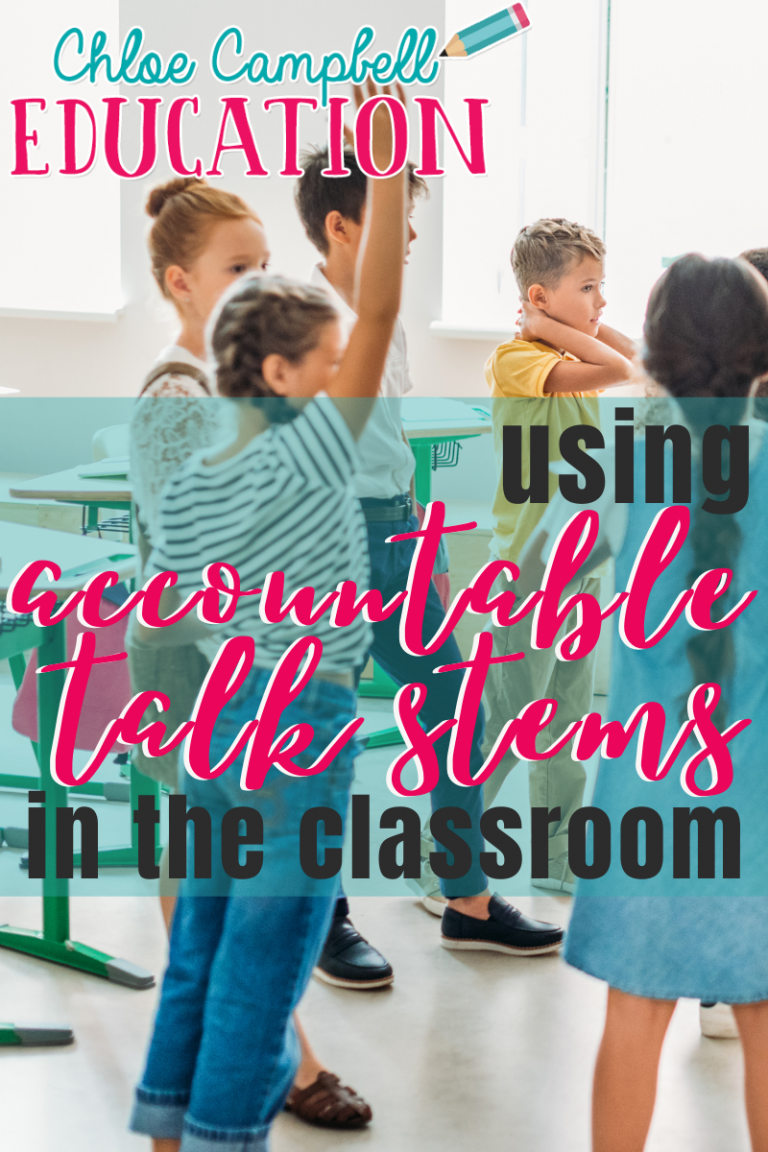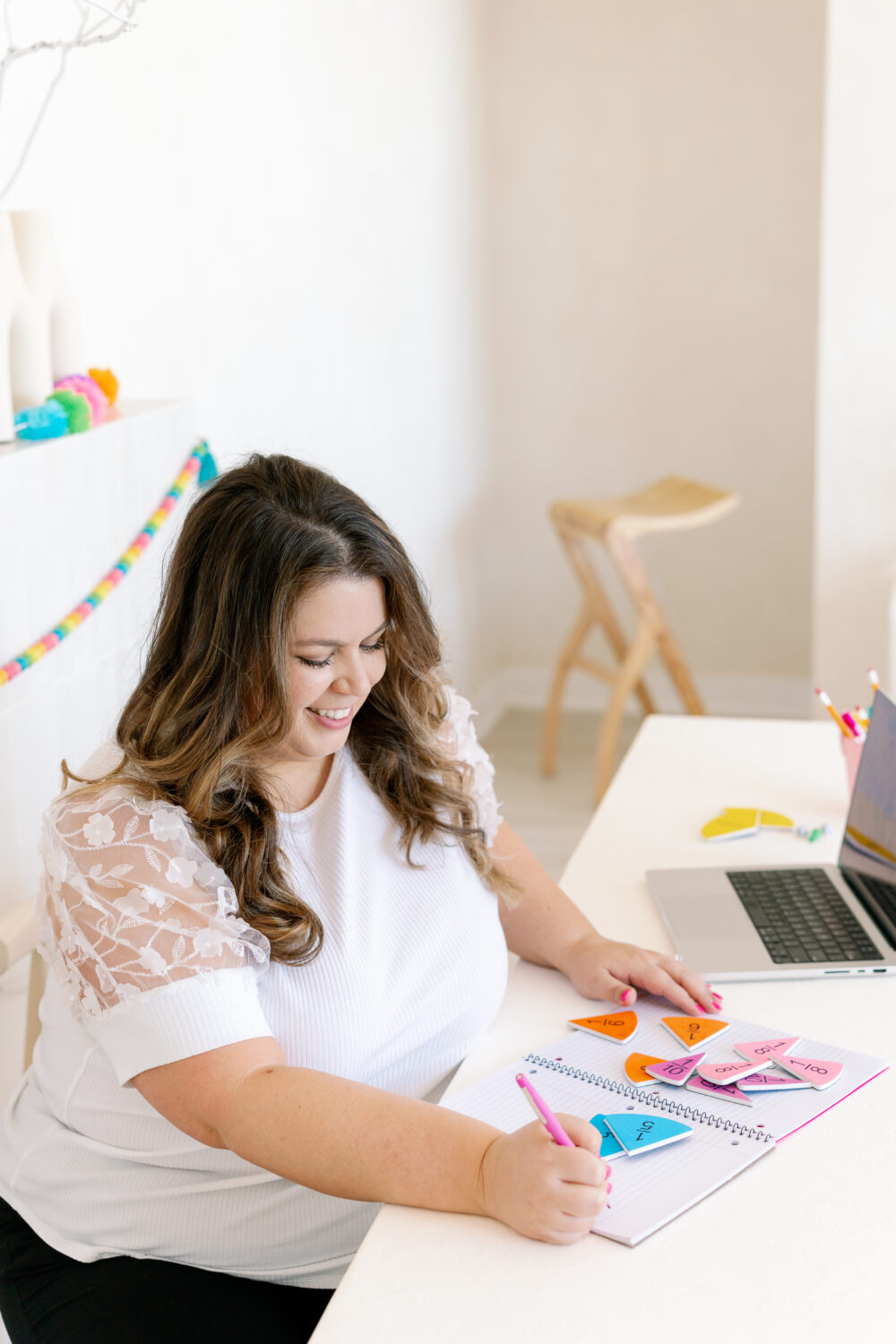How To Make 6th Grade Math Stations Work For Your Classroom
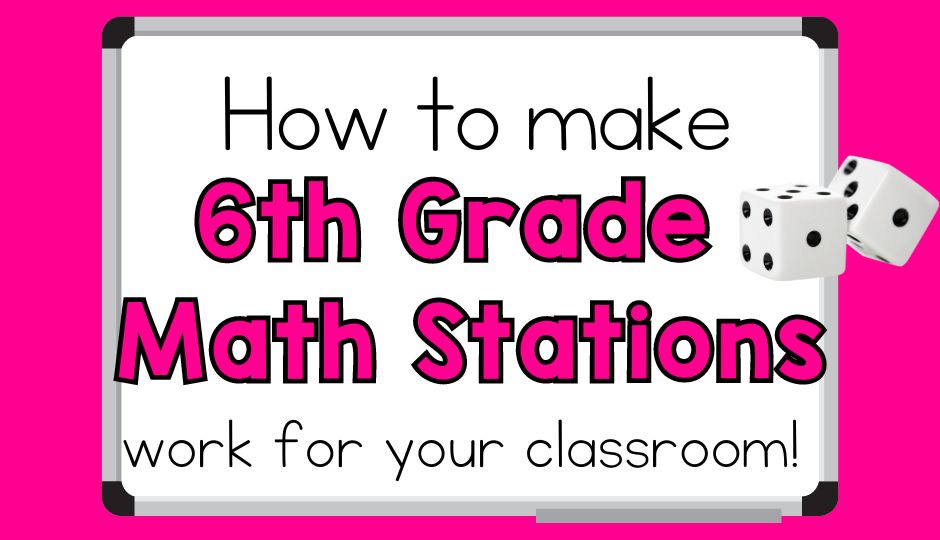
Looking to try 6th grade math stations in your classroom?
Then you’re in the right place – because you’ve stumbled across the ultimate guide for them!
In case you’re in a rush and you’re just looking for resources, I’ve got you covered there, too.
➡️ Click here to get an entire year of 6th grade math review games!
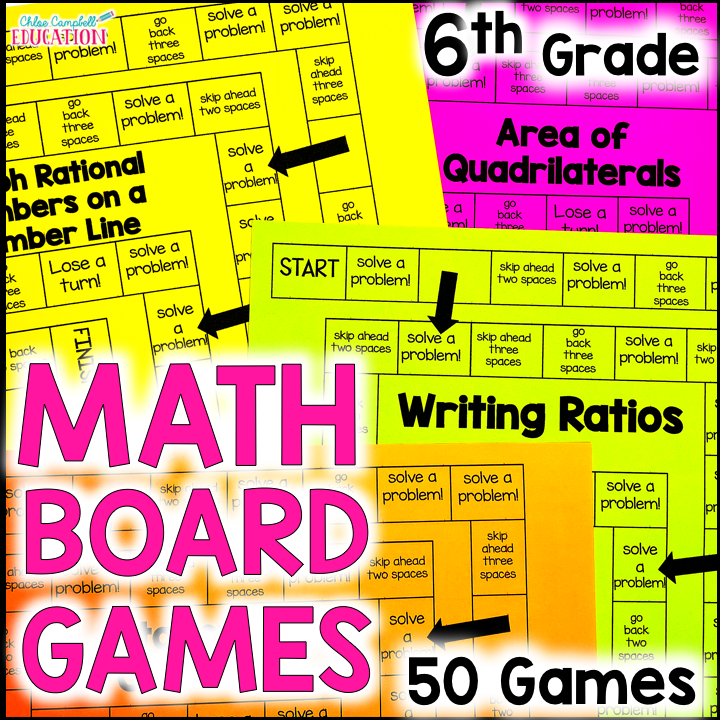
I taught for 11 years and I loved being in the classroom!
I’m passionate about helping students engage with math so they can excel in it, and enjoy it.
You’ll find more ideas, resources, and practical tips here on my website.
I also love sharing inspiration and tips over on my Instagram account!
Introduction to 6th Grade Math Stations
Many 6th grade teachers think that stations, centers, and groups are only for elementary students.
But this couldn’t be further from the truth.
There are so many benefits to utilizing math stations with 6th graders!
After reading this article, I’m confident that you’ll see how much they can do for you and your students.
And on top of that, you’ll know where to go to get future resources and more support!
What Are Math Stations?
In case you’re new to math stations overall, let’s cover what they are.
You can think of them as mini activity hubs where students rotate through different tasks – all designed to help them grasp key math concepts.
It’s a great way to mix things up and get your students working together.
They spend time at each station solving problems, practicing skills, and really getting hands-on with their learning.
Students love them, too!
And they’re a total classroom management hack – since, once you implement them on a regular basis, your students will always know what to expect and where to be.
Making 6th Grade Math Stations Work With Your Math Block
I’ve heard many teachers say something along the lines of, “I’d love to use math stations in my classroom, but I just don’t have time.”
And I totally get it.
You have so much to do in the classroom every day.
➡️ That’s why I create resources to help you save time!

Incorporating stations into your math block really can be seamless, though.
And that’s why I’m here – to help you explore new strategies without extra stress.
Here’s a schedule you can use for your math stations.
Warm-Up (10-15 minutes)
Start your math block with a brief warm-up activity.
This could be a quick review of the previous day’s lesson, a problem of the day, or a few mental math questions.
The goal here is to get students’ minds warmed up and ready to tackle the day’s tasks.
Ideally, you’ll want to choose a problem or activity that hooks them in.
The more fun and engaging it can be, the better!
Some creative ideas for this include:
- Classroom transformations
- Math puzzles
- Brain teasers
- Riddles
- Game show style quizzes
- Flashcard drills
- Math journals
- Estimation challenges
- Math bingo
- Problem of the day
- A “pattern interrupt” demonstration, where it seems unrelated at first
Mini-Lesson (15-20 minutes)
Next, you’ll conduct a focused mini-lesson.
This is your opportunity to introduce new concepts or review challenging material.
Keep it concise and targeted to ensure you have enough time for the hands-on activities that follow.
Ideally, you want for the activities at each math station to support the mini-lesson for that day.
You can think of the warm-up as a check for understanding and an introduction.
Work at the stations themselves should be done independently – so this could be review, or an extension of the mini-lesson review work.
Students receive extension and enrichment when they work with you directly.
Of course, every class and group is different – so this might vary slightly depending on the needs of the students in your classroom.
One big distinction between 6th grade math stations and centers used by younger students, is that your middle school students typically enjoy more independence.
This is great for you as a teacher – because you get to focus on working with small groups!
Math Stations (30-40 minutes)
This is the heart of your math block and it’s where all of the fun happens!
Divide your class into small groups and have them rotate through different stations.
Each station should have a specific focus.
Here’s an example of rotations:
Station 1: Teacher-Led Instruction
Work with a small group to provide targeted instruction or remediation.
Station 2: Independent Practice
Students work on practice problems or worksheets to reinforce the day’s lesson.
Station 3: Hands-On Activities
Use manipulatives or interactive tasks to help students grasp abstract concepts.
Station 4: Technology
Incorporate educational apps or online resources to provide varied and engaging practice.
Each station should last about 10-15 minutes, depending on your total math block time and the number of stations you have.
Wrap-Up and Reflection (10-15 minutes)
After the station rotations, bring the class back together for a wrap-up session.
This is a great time for students to share what they learned, ask questions, and reflect on their progress.
You can also use this time for a quick formative assessment to gauge understanding.
One practical tip here – if you have a clipboard with each student’s name on an Excel sheet, you can track the progress of their understanding for a certain concept or standard.
Then, you can see how they’re progressing over time.
This will help when you meet them at the “teacher table,” and/or when you’re doing individual review with students.
Tips for Managing 6th Grade Math Stations
If you haven’t used stations or centers in your instruction before, it can feel like a huge change.
Thankfully, everything that could go wrong is either completely preventable, or totally fixable!
Here’s some advice from a teacher of 11 years so you know what to expect, and what to do if and when certain things happen:
Effectively managing math stations in a 6th grade classroom can transform the learning experience, making it dynamic and student-centered. Here are some tips to ensure your math stations run smoothly and efficiently:
Set Clear Expectations and Procedures
Clearly explain the expectations for behavior, participation, and movement between stations.
Establish a routine so students know exactly what is expected of them.
Take Time to Practice Math Station Procedures
Spend the first few days practicing station rotations and procedures.
Model how to transition between stations, handle materials, and complete tasks.
Keep Materials Organized and Accessible
Preparation is key!
Have all materials ready and organized before the lesson begins. Use labeled bins or folders for each station to keep everything easily accessible.
Setup Resource Stations
Set up a central area with extra supplies, like pencils, paper, and manipulatives, so students can quickly get what they need without disrupting the flow.
Flexible Grouping
Mix up the groups regularly to encourage different social interactions and learning dynamics.
You can group students by ability, randomly, or by interest.
Station Task Cards
Provide clear, concise instructions at each station.
Use task cards or posters to outline the activity and expectations.
I recommend demonstrating what appropriate transition behavior looks like (i.e. how do students move between stations), and what it looks like to operate well as a team at each station.
Briefly demonstrate each activity before starting the rotations to ensure students understand what to do.
Ideally, the actual activity at each station will stay relatively similar throughout the year.

➡️ This is another great reason to check out my entire year of 6th grade math station activities!
Time Management
Use timers to keep track of station rotations.
Inform students how much time they have left and give a signal a few minutes before they need to switch.
And feel free to change the pacing until it works for your class.
You can adjust the length of time at each station based on the complexity of the tasks and the needs of your students.
Monitoring and Support
Move around the room to observe and support students as they work. This helps you to address any issues and give feedback throughout the math block as needed.
Lean on Student Helpers
Assign student helpers or station leaders to assist with managing materials and answering questions, freeing you up to provide more targeted support.
Assessment and Reflection
Use quick formative assessments, like exit tickets or observation checklists, to gauge student understanding at each station.
Building in time for reflection is also great if you can.
This can be done through journals, discussions, or feedback forms.
Use Ready Made Resources and Activities
Starting 6th grade math stations can be a daunting task.
But if you start with resources that are already ready to go, then most of the work is done for you!
➡️ Click here to learn more about this bundle filled with a year of resources!

Conclusion: 6th Grade Math Stations Are Totally Doable
It’s always challenging to try new things.
But I know you can do it!
And when you do, you’ll sell all of the benefits that comes from encouraging your students to be more independent learners.
With this yearlong bundle of math board games, you’ll be off to a smooth and successful start.
Cheers to another great year teaching 6th grade!
